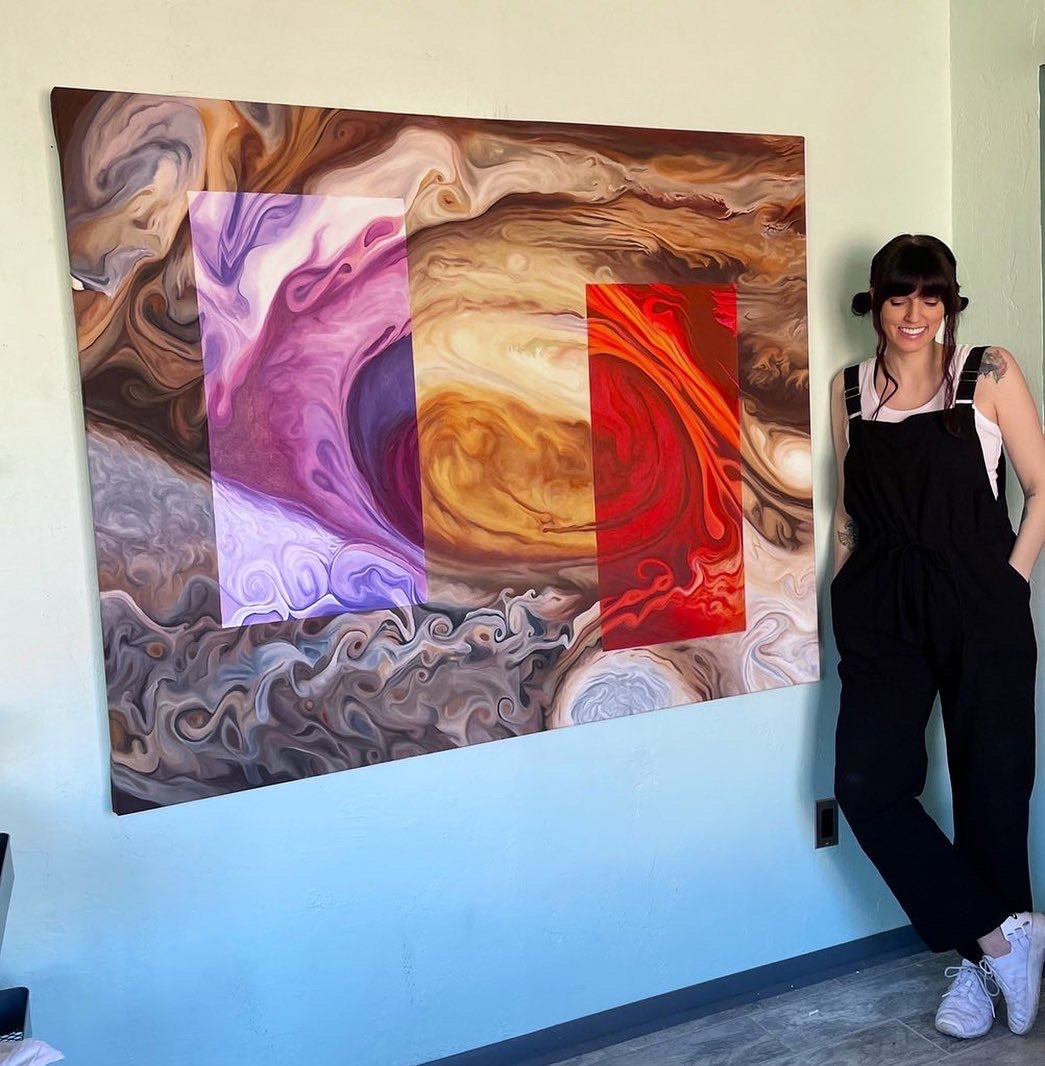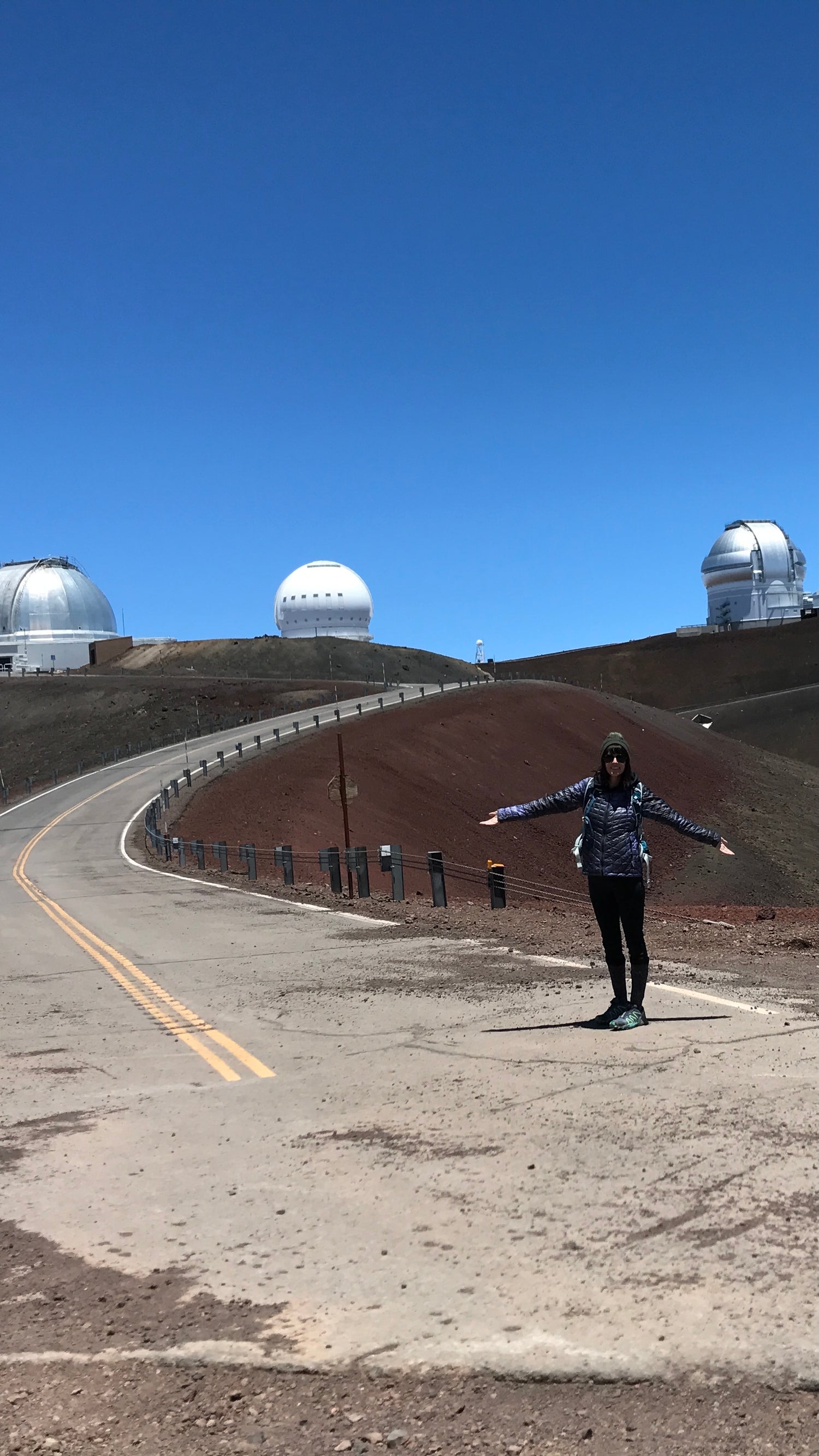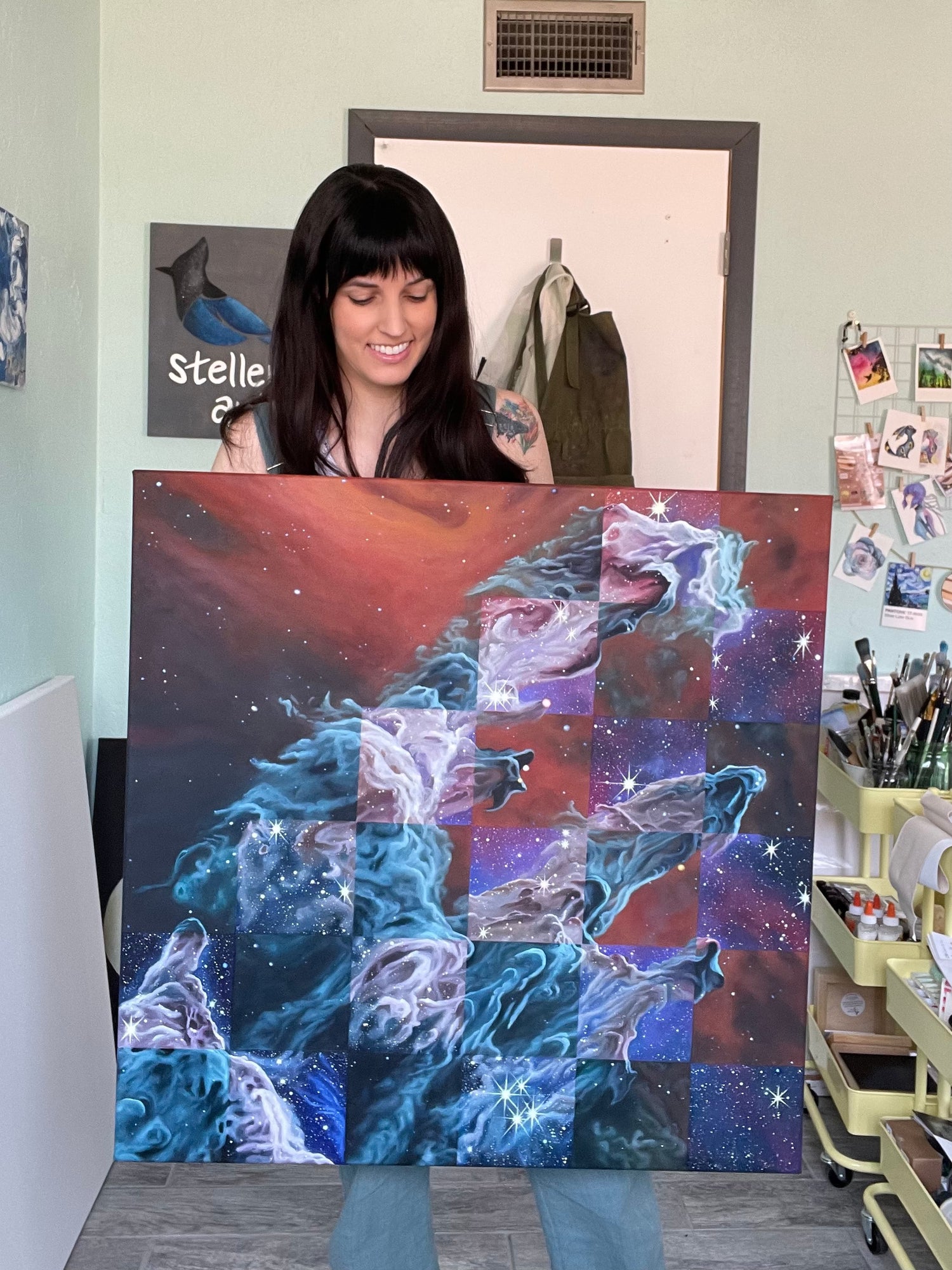
behind the art
Bold colors, intricate details, and smooth brushstrokes define my style. My inspiration comes from telescope images, spacecraft data, celestial events, atmospheric phenomena, and a dash of science fiction. Sometimes technical, sometimes whimsical.
Art is vital to space sciences because we are able to transform abstract concepts into something more tangible. Space art contributes to the scientific process by bringing a sense of reality to the vastness of the universe and shrinking down unfathomably large objects to more relatable human scales.
My mission is to share science stories with every brushstroke—creating thought-provoking paintings and communicating scientific concepts in accessible, innovative ways.

my journey
Growing up on a farm in the countryside of Indiana, my rural upbringing and nights spent under the stars camping with my dad inspired my love of science. But collecting cool rocks in the driveway and running outside during a storm wasn't enough for me. I decided to pursue my childhood dream of becoming a scientist, enrolling in college at age 21 as a first-generation student. After transferring around and learning how to navigate higher education, I graduated from Purdue University in 2013.
My first round of applications to PhD programs were unsuccessful, but I was accepted into a two-year master's program. Things did not go as planned. During my first year of graduate school, a careless driver crashed into my car, shattering my foot and leaving me unable to walk for six months. All I could really do was stare out the window. Birdwatching got me through a difficult recovery and ignited a new passion.
Shaking off the weight from rejections and injury, I eventually pursued a PhD from the University of Arizona, graduating in 2021 with a hybrid doctorate in planetary sciences and science education. I loved my research studying the atmospheres of exoplanets and brown dwarfs. After a short post-doctoral fellowship, I realized I had been running myself into the ground for quite some time and was extremely burnt out from everything I had to overcome. I decided to take a much needed break from academia and pursue new adventures.

steller arts
Throughout my entire journey, art has always been by my side, but my creativity often took a backseat to my educational pursuits. The challenges of balancing multiple part-time jobs left little time and energy for painting, and the echoes of past bad advice—"you can't be a scientist and an artist"—were always haunting what I should prioritize.
Co-organizing and participating in my graduate department's annual art show, The Art of Planetary Science, helped me connect with scientist-artists for the first time. My passion for painting was rekindled. I used this drive to learn new mediums including spray paint, oils, watercolors, and digital art. A more creative outlet from my day-to-day quantitative work was just what I needed to feel rejuvenated.
I stepped into a more public role in 2020 joining social media with a mission to unite science + art. In January 2023 I officially started my business and began selling art full time. Steller Arts is named after one of my favorite birds that helped me recover from my car accident. My hope is to inspire others interested in astronomy to pursue their dreams who, much like me, might not feel like they fit the mold of a scientist.
